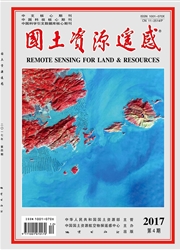

 中文摘要:
中文摘要:
以北京为研究区,整合遥感数据、气象数据及其他多源辅助数据,基于改进的光能利用率( carnegie-ames-stanford approach,CASA)模型分析了2010年北京植被生态系统净初级生产力( net primary productivity,NPP)的时空分布格局及其主要影响因素。结果表明:①2010年北京NPP总量为5.5 TgC,其NPP的空间分布格局为北部和西部山区总量较高,平原区NPP总量较低;②北京植被NPP的季节变化明显,夏季NPP最大,占全年的62%,冬季最小,仅占3%,春季和秋季分别占全年NPP总量的18%和17%;③北京植被NPP受水分和热量条件限制,不同区域的主要限制因子不同,北部和西部山区自然植被受气温影响较大,平原区农作物生长更容易受降水影响,而在山区向平原过渡区域的植被受太阳辐射变化影响明显。
 英文摘要:
英文摘要:
Integrating remote sensing data, meteorological data and other multi - source auxiliary data, the vegetation net primary productivity ( NPP ) spatial and temporal pattern in Beijing and its main influence factors were analyzed based on carnegie-ames-stanford approach( CASA) model in 2010. The results showed that: ①The total amount of NPP was 5. 5 TgC, and the vegetation NPP spatial distribution pattern showed that the NPP in northern and western mountainous areas was higher, while the NPP in plain area was lower. ② The seasonal vegetation NPP in Beijing changed significantly. The NPP in summer was the largest, accounting for 62% of the NPP in the whole year. The smallest was in winter, accounted for only 3%, and the NPP in spring and autumn respectively accounted for 18% and 17% of the total NPP. ③ The vegetation NPP was limited by water and heat conditions. However, the main limiting factor was different in different areas. The natural vegetation in the northern and western mountainous areas was more affected by the temperature, while the crops in plain area were more easily affected by the precipitation. And the vegetation in the transition area from mountains to the plain was more affected by the solar radiation.
 同期刊论文项目
同期刊论文项目
 同项目期刊论文
同项目期刊论文
 期刊信息
期刊信息
